Fuel economy drives innovation.
 By Consumer Reports Staff | ConsumerReports.org – Thu, Sep 8, 2011 1:46 PM EDT
By Consumer Reports Staff | ConsumerReports.org – Thu, Sep 8, 2011 1:46 PM EDTMORE AT CONSUMERREPORTS.ORG
- » Most reliable cars
- » Complete Ratings for 200 cars and trucks Consumer Reports has no relationship with any advertisers on Yahoo!.
Here’s our take on some of the most notable new models.
Audi A6
Summer 2011
The A6 redesign features lighter aluminum body panels and a direct-injection 310-hp 3.0-liter V6 mated to an eight-speed automatic transmission to help improve fuel economy. The base engine is a turbocharged 2.0-liter four-cylinder good for 211 hp paired with a CVT. The front wheels have been moved farther forward, allowing for more cabin room, and the MMI driver-interaction system is said to be a bit easier to operate. Available gadgets include a color heads-up display, a night-vision display, and LED headlights.
Bottom line: It’s significant that Audi and BMW are bringing four-cylinder engines to their elite sedans.
Buick Verano
The smallest Buick in decades is an entry-level sedan based on the Chevrolet Cruze. But it uses the same more powerful 177-hp four-cylinder engine and six-speed automatic transmission as the larger Regal. The Verano has a touch-screen navigation system and uses advanced sound-deadening techniques. Higher trims will offer a heated steering wheel and other plush features.
Bottom line: This compact yet upscale Buick will be a welcome addition for consumers who want luxury features without going to a larger car.
Chevrolet Malibu
The Chevrolet Malibu’s redesign shares underpinnings with the Buick Regal, an agile and well-finished car that did quite well in our road tests. The new Malibu is a bit wider than before, but its wheelbase is about 4.5 inches shorter. The primary engine is a 190-hp four-cylinder, but a mild hybrid system called eAssist, Chevrolet claims, yields 26 mpg in the city and 38 on the highway.
Bottom line: The Malibu will come up against some stiff competition in this segment from midsized stalwarts such as the Nissan Altima, Honda Accord, and Toyota Camry. But if the Malibu retains the Buick Regal’s ride, handling, and interior quality, it should become a strong competitor. Notably, the new Malibu won’t be offered with a V6 engine.
Chevrolet Sonic
The Korean-designed, U.S.-built Sonic is a serious attempt by General Motors to gain traction in the subcompact market now dominated by cars like the Honda Fit and Nissan Versa. A four-door hatch and sedan are available, as they were for the Aveo it replaces. They are both relatively roomy and are powered by the same engines used in the larger Chevrolet Cruze, a 1.8-liter four-cylinder or an optional turbocharged 1.4-liter four-cylinder. The Sonic’s long list of safety features includes 10 air bags.
Bottom line: Our early drives with a preproduction model last winter indicate that the Sonic is far more competitive than the Aveo.
Hyundai Accent
The redesigned Accent subcompact is available as a sedan or hatch. Its interior is relatively spacious and well finished. Its new 138-hp four-cylinder direct-injection engine gets an EPA estimated 30/40 (city/highway) mpg. Standard features include six air bags and active front head restraints but not cruise control. Both transmissions, an automatic and a manual, are six-speed.
Bottom line: The Accent is about sound, affordable transportation. But the interior feels cheap, and the cabin is noisy.
Hyundai Veloster
Fall 2011
The Veloster is a small two-door sports coupe, but there’s a well-concealed rear door on the passenger side that grants access to a two-person rear seating area. The interior design is glitzy-modern with metallic grab handles on the center console and on the front doors. The powertrain, like the one in the new Accent, is a 138-hp four-cylinder direct-injection engine mated to a six-speed manual or automatic transmission. The Environmental Protection Agency rates the Veloster’s fuel economy at 40 mpg on the highway and 30 in the city, putting it on par with the Honda CR-Z hybrid.
Bottom line: It’s hard to believe that the miserly fuel economy will allow for much giddyap, but agile handling could trump the need for speed here.
Nissan Versa
The redesigned Versa bows as a sedan, and a hatchback will follow in spring 2012. We liked the outgoing Versa; its best features were an upscale interior and spacious rear seat, which continue in the redesign. The new car is about the same size as the old one but lower and lighter, with a smaller engine bay and larger trunk. The new engine is an advanced 109-hp, 1.6-liter four-cylinder with a five-speed manual or continuously variable transmission. Nissan says combined city/highway fuel economy should improve to 33 mpg.
Bottom line: If the new engine has sufficient pep, this car should do well. Nissan touts a starting price of less than $11,000, but you’ll probably pay about $16,000 for a well-equipped version.
Subaru Impreza
The Impreza redesign has a longer wheelbase, more rear leg room, and an upgraded interior. Subaru claims that the new 148-hp, 2.0-liter four-cylinder engine gets 30 percent better fuel economy than the previous model. The new continuously variable transmission should be a step up from the four-speed automatic it replaces.
Bottom line: The Impreza has been a good, reliable car for years, but its standard all-wheel drive hurt fuel economy. If Subaru has addressed that shortcoming while making the interior larger and quieter, as claimed, that’s a big plus.
Toyota Camry
The new Camry doesn’t stray far from its traditional recipe. It comes with a four-cylinder, a hybrid, and a V6. Trim lines range from the base L to the LE, XLE, and a mildly sporty SE. Powertrains carry over from the previous model. The new electric power steering should contribute to improved fuel economy.
Bottom line: We would expect the Camry to retain its comfortable ride and quiet interior and hope the interior quality doesn’t backslide, as it has in some recent Toyotas.
Toyota Prius V
The Prius V is an enlarged-wagon version of a regular Prius, slightly taller, 6 inches longer, and an inch wider. Toyota claims that cargo space has grown by more than 50 percent over the hatchback model’s. It uses the same 1.8-liter four-cylinder engine as the basic Prius, but EPA fuel economy, although still excellent, is considerably less, 44 mpg in the city and 40 on the highway. The Prius V introduces the Entune infotainment system, which delivers telematics services and Web apps (see Connected cars: A new risk). A weight-saving moonroof is optional on the high-end trim line.
Bottom line: The V provides more cargo space than a hatchback or sedan and better fuel economy than an SUV or wagon.
Volkswagen Beetle
For 2012 VW introduces the second generation of the reincarnated Beetle. It’s wider and longer than the last one, and the trunk and cabin are much roomier, making the car a more practical choice. The base five-cylinder engine is rated at 170 hp, and a 200-hp turbocharged four-cylinder and 140-hp diesel are available.
Bottom line: More space and power might breathe new life into the retro Beetle. But lower-trim Beetles have rather cheap interior plastics, examples of the cost-cutting strategy that hurt the 2011 Jetta (available to subscribers) sedan we tested.
Volkswagen Passat
The redesigned Passat is larger than the previous version. The interior looks solid, with a soft-touch dash and switches, buttons and knobs that it shares with the well-executed Touareg. A 170-hp five-cylinder is the base engine, which is also found in the Jetta (available to subscribers). The higher-end engine is a 280-hp V6. A 140-hp 2.0-liter diesel that Volkswagen says will get 43 mpg on the highway will be available. All-wheel drive will be optional.
Bottom line: If Volkswagen’s new emphasis on value pricing doesn’t cut corners, then the new Passat might be a solid competitor. But it has lost some of the sharpness of its predecessors.
Electric cars hit the road
They’re cheaper to run but not suitable for everyone
Electric vehicles are finally appearing in showrooms. We’ve been testing the first modern one available, the $35,430 Nissan Leaf, for some months. It works well for running errands and on short trips, climbing hills effortlessly and riding comfortably and quietly. The range per charge hovers around 75 to 80 miles (65 when the weather is cold), so long journeys are out of the question without added charging opportunities.
Electric vehicle purchases currently qualify for a federal income tax credit of up to $7,500.
Here are other electrics you might see on the road soon:
At $27,990, the “i” will be the cheapest electric vehicle to date when it goes on sale early next year. It’s a tiny four-door hatchback that uses a 66-hp electric motor to power the rear wheels. The “i” is rated by the Environmental Protection Agency at 126 MPGe (the miles-per-gallon gasoline equivalent) in the city and 99 MPGe on the highway (112 MPGe combined). The EPA says the range is 62 miles, compared with 75 for the Nissan Leaf.
Ford Focus Electric
Due late this year in selected areas, the Focus Electric is a five-door hatchback based on the redesigned Focus hatchback. The driving range is claimed to be about 100 miles per charge. Onboard electronics allow reduced charge times: Ford says a full charge will take only 3 to 4 hours (about half of what a Leaf takes). We like the gas-powered version’s handling, agility, and ride control of the Focus; the immediate power delivery should make it even more fun to drive. Ford has yet to announce the cost of the Focus Electric; it probably will be between a Nissan Leaf and Chevrolet Volt.
This long-awaited luxury hatchback is scheduled to start production in early 2012. The sleek Model S also has a tiny rear-facing third seat. A choice of battery packs supply a claimed range of 160 to 300 miles. Retail is estimated at $70,000 to $80,000.
Posting source: http://autos.yahoo.com/news/new-car-preview.html
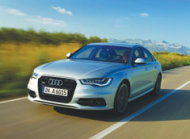
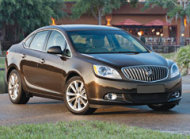
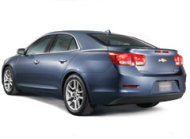
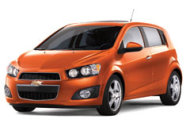
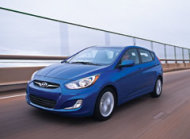
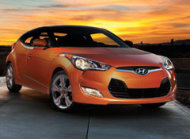
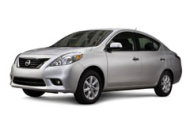
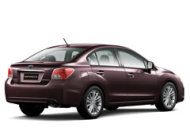
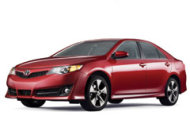

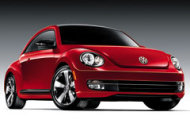

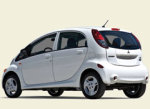

No comments:
Post a Comment